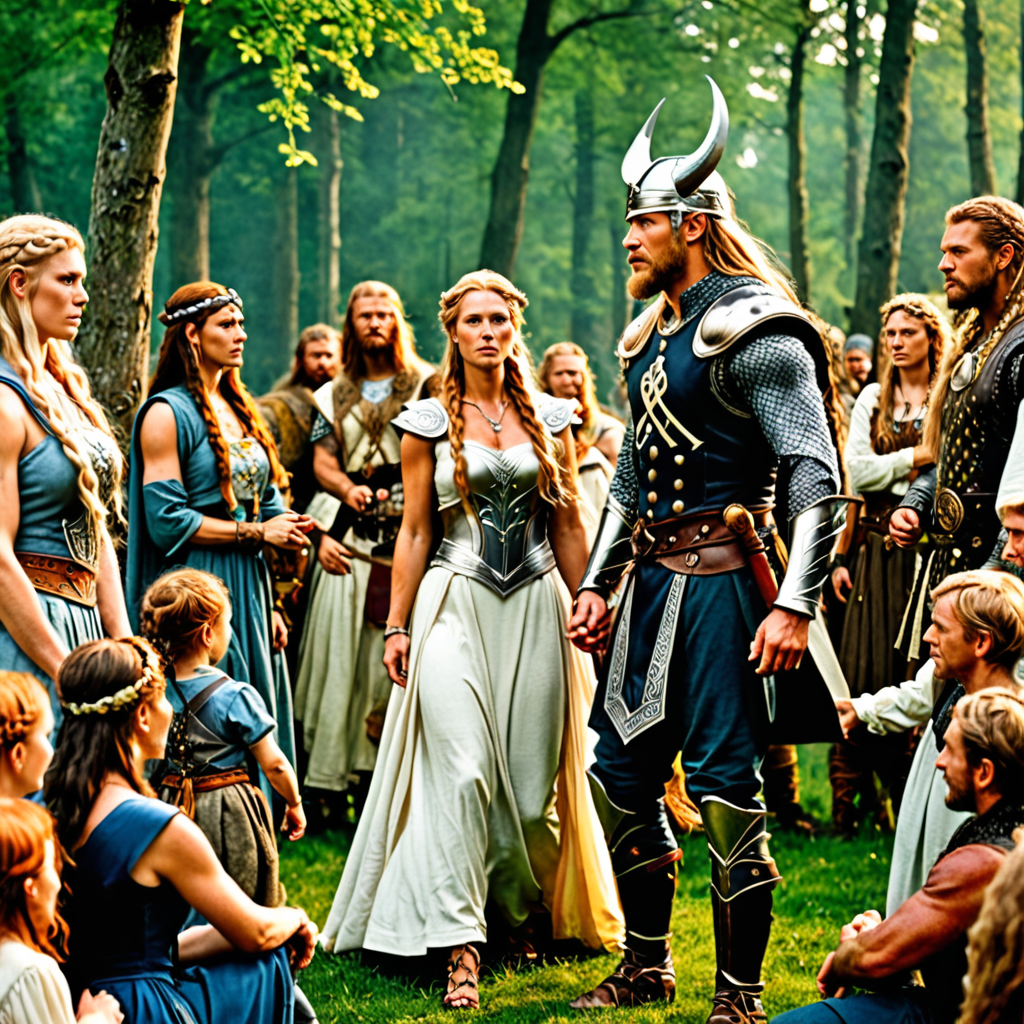The Shadow of Asgard: Níðhöggr’s Influence on Norse Mythology
I. Introduction
Norse mythology is a rich tapestry of gods, giants, and creatures that has fascinated scholars and enthusiasts for centuries. From the powerful Æsir to the enigmatic Vanir, the pantheon and its stories reveal deep cultural insights into the Norse worldview. Among these figures is Níðhöggr, a significant and often misunderstood creature that plays a crucial role in the mythological narratives.
This article aims to explore Níðhöggr’s impact on the mythological landscape, examining its origins, roles, and the broader implications of its symbolism. By delving into the stories and interpretations surrounding Níðhöggr, we can gain a deeper understanding of its significance in Norse mythology.
II. The Origins of Níðhöggr
The name Níðhöggr can be broken down etymologically, where “níð” often refers to malice or hostility, and “höggr” means to strike or to cut. This name symbolizes a being that embodies destruction and malevolence, setting the tone for Níðhöggr’s character in the myths.
Níðhöggr is primarily depicted as a dragon or serpent that dwells beneath Yggdrasil, the World Tree, which connects the nine realms of Norse cosmology. Its presence under the tree signifies its role as a devourer of the dead and a force that represents the inevitable decay of all things.
The connection between Níðhöggr and Yggdrasil is profound, as the World Tree is a source of life and vitality, while Níðhöggr represents the darker aspects of existence. This duality emphasizes the balance within the mythological cosmos.
III. Níðhöggr’s Role in the Underworld
In Norse mythology, the underworld is often associated with Hel and Niflheim, realms where the dead reside. Níðhöggr is said to inhabit these dark places, where it gnaws on the roots of Yggdrasil, feeding on the dead that are condemned to this shadowy realm.
Níðhöggr’s relationship with the dead is complex; it is both a punisher and a recycler of souls, highlighting its role as a symbol of decay and renewal. This process of decay is essential for the cycle of life, suggesting that destruction is a necessary precursor to rebirth.
Interpretations of Níðhöggr often portray it as a harbinger of chaos, yet it also embodies the potential for regeneration. This dualism encapsulates the Norse understanding of existence, where life and death are intertwined in a perpetual cycle.
IV. Níðhöggr and the Cycle of Life
Níðhöggr’s serpentine form symbolizes chaos, representing the untamed forces of nature that can lead to both destruction and creation. Its existence beneath Yggdrasil serves as a reminder of the ever-present threat of decay that looms over all living things.
The balance between creation and destruction is a recurring theme in Norse mythology. Níðhöggr’s role emphasizes that while life is precious, it is also fleeting. The cycle of life is a constant dance between these forces, shaping the fate of gods and mortals alike.
Furthermore, Níðhöggr’s influence extends into the understanding of fate and destiny within Norse beliefs. The intertwining of life and death reflects the inevitability of fate, mirroring the belief that every being is subject to the whims of the Norns, the weavers of fate.
V. Níðhöggr’s Influence on Other Mythological Figures
Níðhöggr’s relationships with other mythological figures are noteworthy. It shares a connection with several creatures and deities that embody similar themes of chaos and destruction. Notably, comparisons can be drawn between Níðhöggr and:
- Jörmungandr: The Midgard Serpent that encircles the Earth, representing the cyclical nature of destruction and rebirth.
- Fenrir: The monstrous wolf destined to devour Odin during Ragnarök, illustrating the inevitability of chaos in the face of order.
Níðhöggr also plays a pivotal role in the events of Ragnarök, where it is prophesied to emerge and participate in the final battle between the gods and the forces of chaos. This highlights its significance in the grand narrative of Norse mythology, serving as a reminder of the continuous struggle between order and chaos.
VI. Artistic Representations of Níðhöggr
Throughout history, Níðhöggr has been depicted in various ancient texts and sagas, where it is often portrayed in relation to Yggdrasil and the underworld. These representations provide insight into the cultural perceptions of decay and the afterlife.
In modern times, Níðhöggr’s influence extends into popular culture, appearing in:
- Films that explore Norse mythology, often as a symbol of chaos.
- Video games that incorporate mythological themes, where Níðhöggr serves as a formidable antagonist.
- Literary adaptations that reinterpret ancient narratives, bringing new life to this ancient figure.
These artistic representations emphasize Níðhöggr’s lasting legacy and its ability to resonate with contemporary audiences.
VII. Interpretations and Theories Surrounding Níðhöggr
Scholarly perspectives on Níðhöggr’s symbolism reveal a multifaceted creature representing more than just chaos and decay. Some theories suggest that Níðhöggr embodies the natural cycles of life, death, and rebirth, making it a powerful figure in understanding Norse cosmology.
Psychologically, Níðhöggr can be interpreted as a representation of the shadow self, a concept popularized by Carl Jung. This interpretation suggests that Níðhöggr symbolizes the darker aspects of human nature—the fears, desires, and instincts that are often suppressed yet remain a vital part of our existence.
In contemporary discussions of mythology, Níðhöggr’s relevance persists as a symbol of the struggles between light and darkness, creation and destruction. Its dual nature invites ongoing exploration and reflection on the complexities of existence.
VIII. Conclusion
Níðhöggr holds a significant place in Norse mythology, illustrating the complexities of life, death, and the cyclical nature of existence. As a figure that embodies both chaos and renewal, Níðhöggr challenges our understanding of morality and fate within the mythological framework.
Reflecting on Níðhöggr’s legacy allows us to appreciate its role in shaping modern interpretations of mythology, where the tensions between dualities continue to resonate. In our quest for understanding, Níðhöggr remains a pivotal figure that invites contemplation of the balance between creation and destruction.
Ultimately, Níðhöggr serves as a reminder that within the shadows of Asgard, the forces of decay and renewal coexist, shaping the narratives that define our existence.
